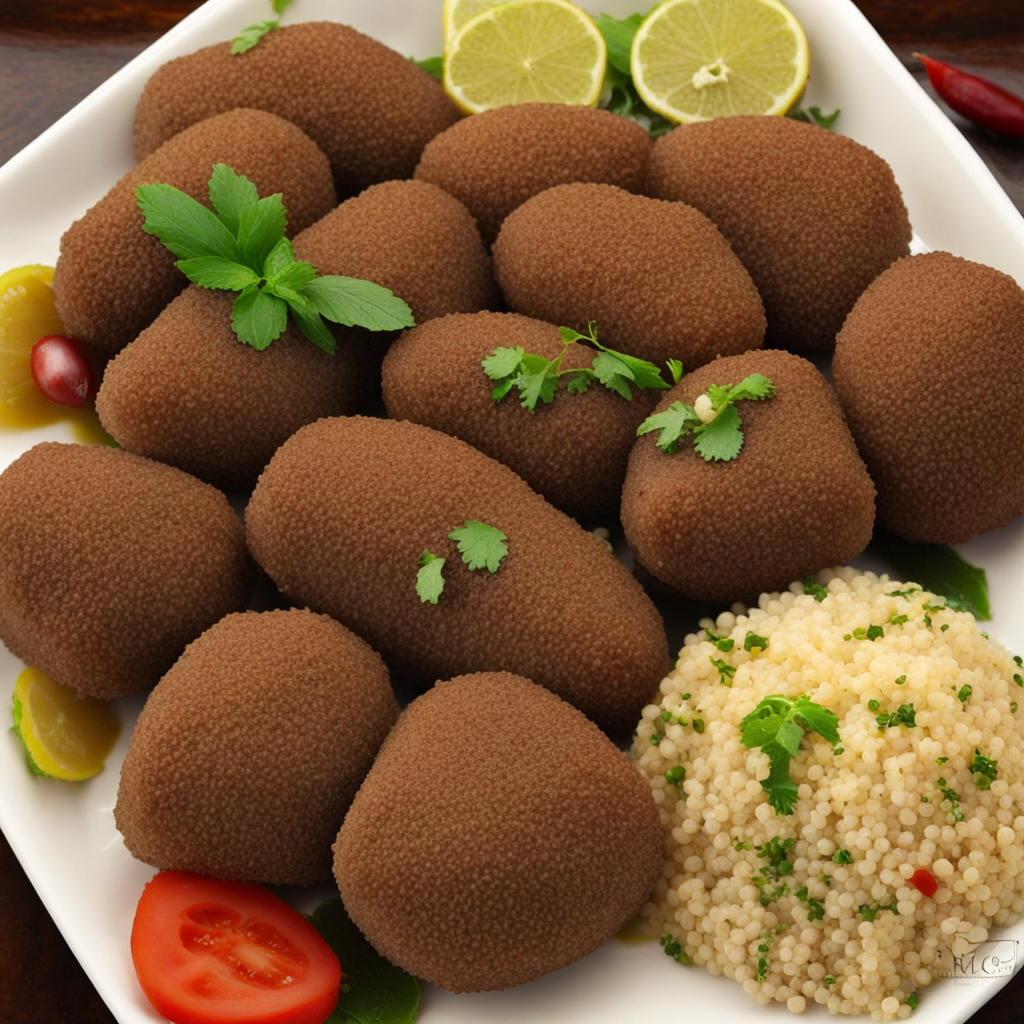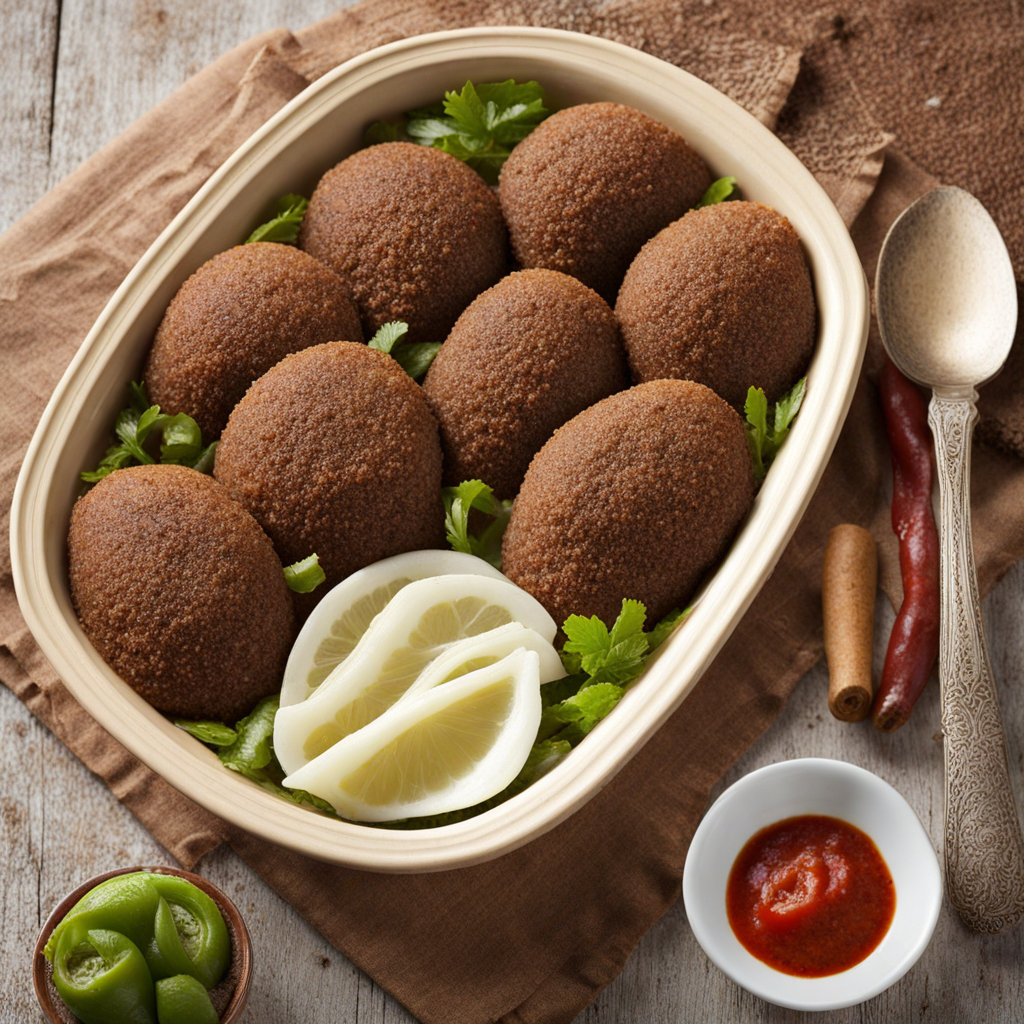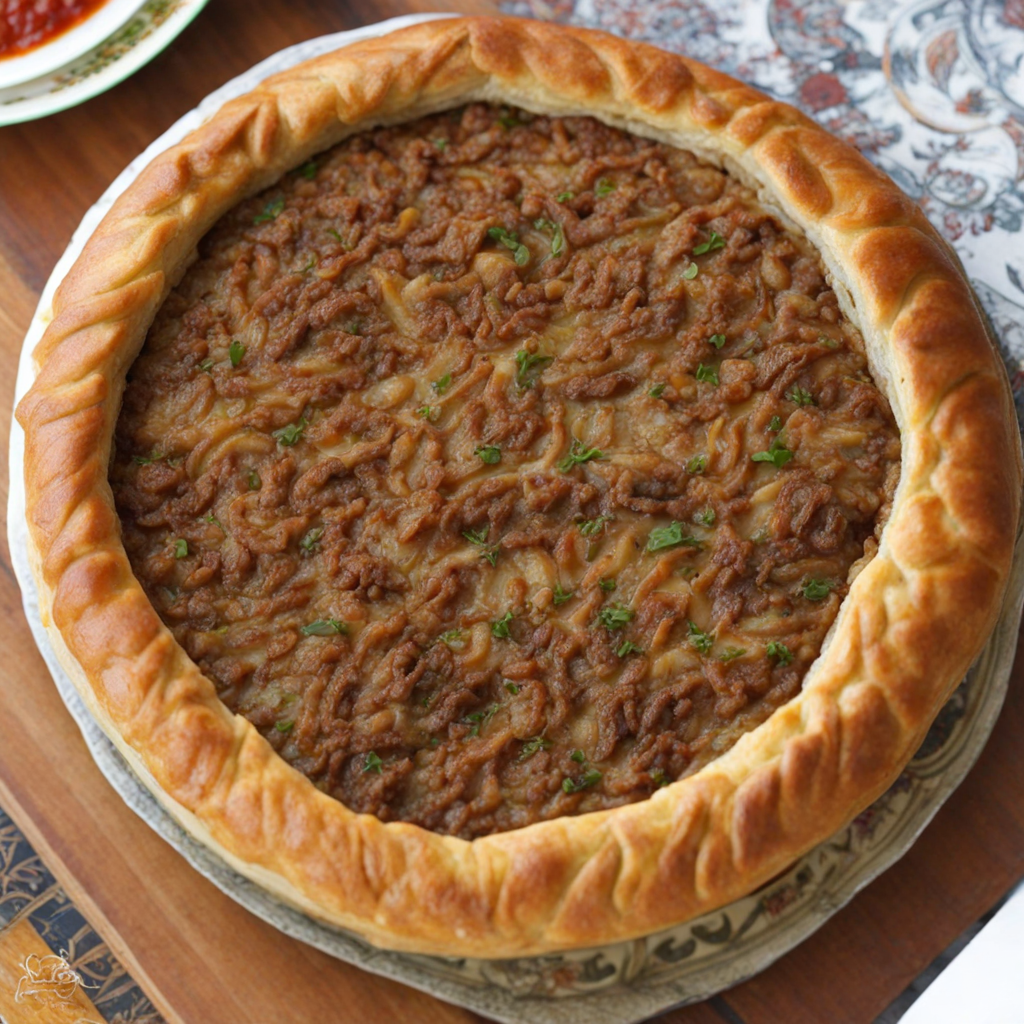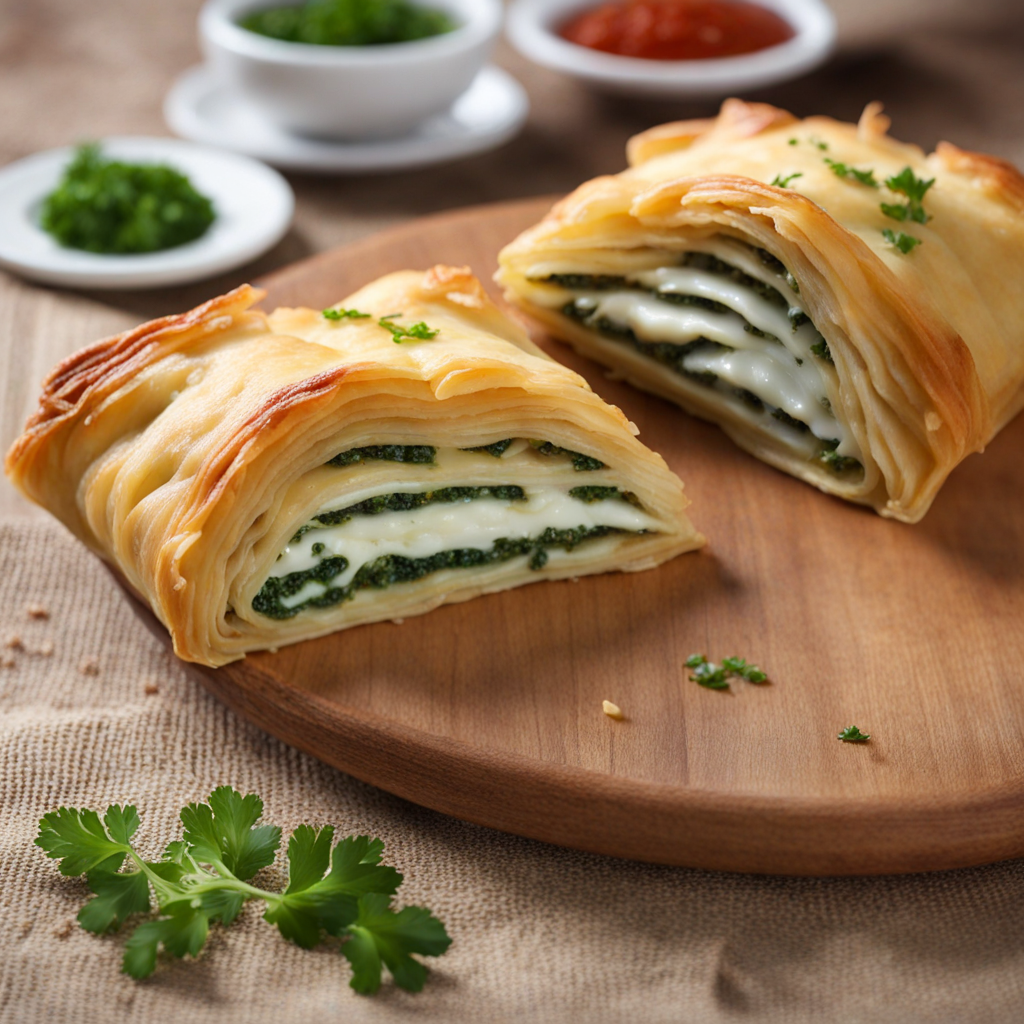Kibbeh
Kibbeh is a traditional dish that hails from the Middle East, particularly beloved in Syria. This savory delight is primarily made from finely ground bulgur wheat and minced meat, usually lamb or beef, mixed with aromatic spices such as cinnamon, allspice, and nutmeg. The dish showcases a unique texture, where the outer layer is smooth and slightly chewy, while the filling is rich and flavorful, often combined with sautéed onions and pine nuts. Kibbeh can be served in various forms, including raw, baked, or fried, allowing for an exciting culinary experience that caters to diverse palates. One of the most popular variations of Kibbeh is Kibbeh Nayeh, which is made with raw minced meat mixed with bulgur and spices, served with fresh herbs and a drizzle of olive oil. This variation emphasizes the freshness of the ingredients and is often accompanied by fresh vegetables, such as cucumbers and tomatoes, adding a refreshing contrast to the rich flavors. Other forms, like Kibbeh bil Sanieh, are baked in a tray, creating a crispy crust while keeping the filling moist and flavorful. Each bite offers a delightful interplay of textures and tastes that reflect the essence of Syrian cuisine. The enjoyment of Kibbeh is not just about taste; it is also about the communal experience it fosters. Often served during family gatherings and special occasions, this dish brings people together, encouraging sharing and conversation. Whether you choose to enjoy it at a local restaurant or try your hand at making it at home, Kibbeh invites you to explore the depth of Syrian flavors, making it a must-try for anyone seeking a new and exciting culinary adventure.
How It Became This Dish
The Rich Tapestry of كبة (Kibbeh): A Culinary Icon of Syria Kibbeh, known as كبة in Arabic, is more than just a dish; it is a culinary emblem that encapsulates the rich tapestry of Syrian culture and history. This beloved dish has been cherished for centuries, evolving through time while retaining its core identity. The origins of kibbeh are steeped in ancient traditions, and its significance extends beyond the dining table, embodying the communal spirit and hospitality of the Syrian people. Origins The origins of kibbeh can be traced back to the ancient civilizations of the Levant, particularly in the regions that now constitute modern-day Syria, Lebanon, and parts of Turkey and Iraq. Historical records suggest that the dish dates back to the time of the Phoenicians, around 3000 BC, who were known for their culinary expertise and trade routes across the Mediterranean. The word “kibbeh” is derived from the Arabic verb “kabb,” which means “to pound,” reflecting the traditional method of preparation, where ingredients are ground and mixed together to form a unique texture. The essential components of kibbeh include bulgur (cracked wheat), minced meat (usually lamb or beef), and a blend of spices such as cinnamon, allspice, and nutmeg. This combination of ingredients is not only a testament to the agricultural richness of the region but also showcases the influence of various cultures that have traversed the lands of Syria over millennia. Cultural Significance Kibbeh is more than mere sustenance; it serves as a symbol of hospitality and community. In Syrian culture, food is an integral part of social gatherings, family celebrations, and religious festivals. Kibbeh is frequently served during special occasions, such as weddings, holidays, and family reunions, where it becomes a centerpiece that brings people together. The act of preparing kibbeh can be a communal affair, often involving family members gathering to share stories and laughter while working collaboratively to create this iconic dish. The dish has also transcended social classes, appearing in both humble homes and lavish banquets. Its versatility allows it to adapt to various dietary preferences and occasions, with numerous regional variations and preparations that reflect local customs and resources. From the raw version known as "kibbeh nayeh," which is akin to steak tartare, to baked or fried forms, kibbeh showcases the ingenuity of Syrian cuisine. Development Over Time Over the centuries, kibbeh has evolved, influenced by the rich cultural exchange brought about by trade, migration, and conquest. The Ottoman Empire, which ruled over Syria for several centuries, played a significant role in shaping the culinary landscape of the region. During this period, the technique of making kibbeh became more refined, and new variations emerged, reflecting the diverse tastes of the empire's vast territories. In the 19th century, during the height of the Ottoman Empire, kibbeh gained popularity beyond its place of origin. It began to spread throughout the Middle East and into the Mediterranean, with each region adopting its own twist. For instance, in Lebanon, kibbeh is often made with a spiced meat filling and is shaped into an oval or round form, while in Iraq, it may include a more intricate mixture of ingredients and spices. The 20th century brought about further changes, particularly with the advent of globalization. As Syrian communities migrated to different parts of the world, they carried their culinary traditions with them. Kibbeh became a staple in Syrian diaspora communities, evolving to include new ingredients based on local availability. In the United States, for example, it has been adapted to include ground turkey or chicken, catering to changing dietary preferences. Regional Variations The beauty of kibbeh lies in its adaptability, with numerous regional variations that highlight local ingredients and culinary practices. In Syria, one of the most popular forms is "kibbeh bil sanieh," which is a baked version where the mixture is layered and cooked in a pan, often with a rich filling of spiced meat and nuts. Another variation is "kibbeh ma'li," which is served in a broth, creating a comforting dish that is especially popular during colder months. In addition to these traditional forms, contemporary chefs in Syria and around the world are experimenting with new ingredients and cooking techniques, infusing modern twists into this age-old dish. Vegan versions have emerged, utilizing lentils or chickpeas in place of meat, reflecting the growing trend towards plant-based diets. Kibbeh Today Today, kibbeh continues to be celebrated not just in Syria but across the globe. Food festivals, cooking classes, and cultural events showcase this iconic dish, allowing younger generations to connect with their heritage. Kibbeh has also garnered attention in the culinary world, being featured in international menus and cooking shows, further cementing its status as a symbol of Middle Eastern cuisine. In Syria, despite the challenges posed by conflict and economic hardship, the preparation and sharing of kibbeh remain an act of resilience and hope. Families continue to gather around the table, preparing this dish with love and care, preserving the traditions passed down through generations. The communal aspect of kibbeh serves as a reminder of the strength of family ties and the importance of cultural heritage amidst adversity. Conclusion Kibbeh is not merely a dish; it is a narrative woven through time, reflecting the history, culture, and resilience of the Syrian people. Its evolution from ancient origins to a modern culinary icon underscores the dynamic nature of food as a reflection of identity and community. As kibbeh continues to be celebrated and reimagined, it remains a testament to the enduring spirit of Syrian hospitality and the power of food to bring people together across generations and borders. Whether served at a grand feast or a simple family meal, kibbeh symbolizes the warmth of Syrian culture and the rich flavors that define its culinary legacy.
You may like
Discover local flavors from Syria







